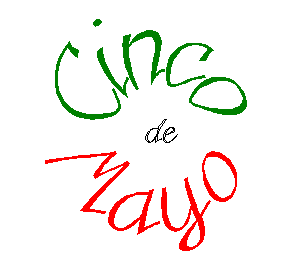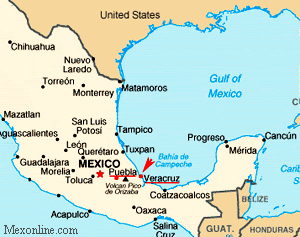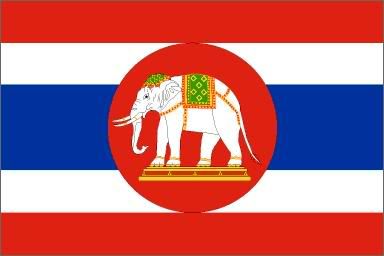VIVA EL 5 DE MAYO!
 Cinco de Mayo is a pretty big holiday in this part of the country. In some communities near here, the celebrations rival those of American Independence Day (the 4th of July). But many people I know in other parts of the country mistakingly think May 5th is the anniversary of Mexican independence from Spain -- THAT date is actually September 15, 1810 (although the Spanish would stay another eleven years).
Cinco de Mayo is a pretty big holiday in this part of the country. In some communities near here, the celebrations rival those of American Independence Day (the 4th of July). But many people I know in other parts of the country mistakingly think May 5th is the anniversary of Mexican independence from Spain -- THAT date is actually September 15, 1810 (although the Spanish would stay another eleven years).
Cinco de Mayo commemorates the victory of the Mexican army over French troops (and Mexican traitors) at the Battle of Puebla on May 5, 1862. The French occupation of the country had come about in the aftermath of the Mexican-American War of 1846-48 (which led to New Mexico becoming a part of the United States). A costly civil war followed, leaving Mexico devastated and bankrupt.
In 1861, Mexican President Benito Juárez issued a moratorium in which all foreign debt payments would be suspended for a brief period of two years, with the promise that after this period, payments would resume. The creditors in Europe (England, Spain and France) decided intervention was needed to collect the debts.
Unbeknownst to the other two, France had its own agenda. France wanted to dispose of the Mexican Constitutional Government and set up a monarchy favorable to France. Napoleon III, Emperor of the Second French Empire had grandiose plans to impose a monarchical government upon the nations of Central and South America. This was to provide raw materials and trade for the European nations as well as check the growing power of the U.S. Republic following the annexation of California, Arizona and New Mexico.
France's designs were formented and abetted by the plutocratic and conservative land owners of Mexico who feared loss of land and political power to the newly elected constitutional government of Benito Juárez. On December 8th, 1861 the European powers landed and occupied Veracruz with Spain arriving first. By April 11, 1862 after realizing France's intent, England and Spain withdrew their support.
Meanwhile, in Mexico City, President Juárez (a full blooded Zapotec Indian, and a lawyer who had studied to become a priest), was taking countermeasures: "There is no help but in defense but I can assure you... the Imperial Government will not succeed in subduing the Mexicans, and its armies will not have a single day of peace... we must stop them, not only for our country but for the respect of the sovereignty of the nations". Juárez declared martial law and declared all areas occupied by the French in a state of siege. After reinforcements arrived, a French force of (7,000) seven thousand set out on the (225) two hundred twenty five mile route to Mexico City in early April under the illusion that the Mexican people would welcome them. This illusion was fostered by Juan N. Almonte, a Mexican reactionary, and by Count Dubois du Saligny appointed French Ambassador to Mexico by Napoleon. Presidente Juárez commanded General Ignacio Zaragoza to block the advance of the French Army with 2,000 soldiers at the fortified hills of Loreto and Guadalupe by the city of Puebla.
After reinforcements arrived, a French force of (7,000) seven thousand set out on the (225) two hundred twenty five mile route to Mexico City in early April under the illusion that the Mexican people would welcome them. This illusion was fostered by Juan N. Almonte, a Mexican reactionary, and by Count Dubois du Saligny appointed French Ambassador to Mexico by Napoleon. Presidente Juárez commanded General Ignacio Zaragoza to block the advance of the French Army with 2,000 soldiers at the fortified hills of Loreto and Guadalupe by the city of Puebla.
On May 5, 1862, cannons boomed and rifle shots rang out as the French soldiers attacked the two forts. Before the day was over, one fort was in ruins and more than a thousand French soldiers were dead. The Mexicans had won the battle, but not the war. Yet, this date was established as symbolic of the Mexicans' courage against a formidable army.
In June 1864, Maximilian of Habsburg and his wife Charlotte arrived in Mexico City as the crowned Emperor of the newly formed Mexican Empire. Although Maximilian organized the administration, liberated the Indians from servitude, and developed the natural resources of the country, he was unable to avoid the opposition of the Mexican patriots. The republicans, led by Benito Juárez, did not accept the foreign intervention. They went north and requested assistance from the Californians and other Mexican-American societies to help them with volunteers and financial support.
Finally, Maximilian was overthrown and captured on May 15, 1867, tried by court martial, and executed by firing squad on June 19 at the Cerro de las Campanas along with his generals Miguel Miramón and Tomás Mejía.
Cinco de Mayo is a Mexican national holiday. The battlefield is now a park in Puebla with a statue of General Zaragoza riding horseback. One of the forts is a war museum with a display of hundreds of toy soldiers set up to show what had happened that day.
Oddly enough, the 5 de Mayo has become more of a Chicano holiday than a Mexican one. In Mexico, for the most part, the day is more of a regional holiday in Mexico, celebrated most vigorously in the state of Puebla. There is some limited recognition of the holiday throughout the country with different levels of enthusiasm, but it's nothing like that found in Puebla.
Celebrating Cinco de Mayo has become increasingly popular along the U.S.-Mexico border and in parts of the U.S. that have a high population of people with a Mexican heritage. The festive celebrations -- consisting of parades, music, folklore, dances and food -- are often fund raising events and for solidarity among the Mexican-Americans.
Commercial interests in the United States and Mexico have also been successful in promoting the holiday, with products and services focused on Mexican food, beverages and festivities, with music playing a more visible role as well. Several cities throughout the U.S. (including Albuquerque) hold parades and concerts during the week following up to May 5th, so that Cinco de Mayo has become a bigger holiday north of the border than to the south, and adopted into the holiday calendar of more and more people every year.












ไม่มีความคิดเห็น:
แสดงความคิดเห็น